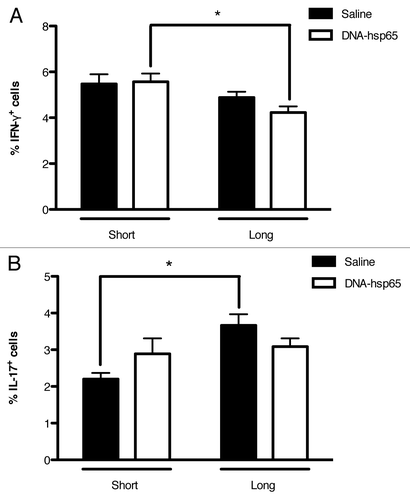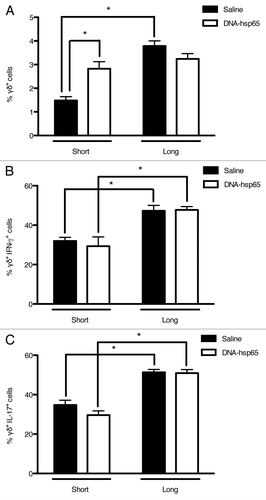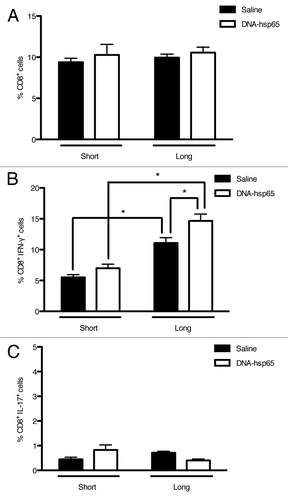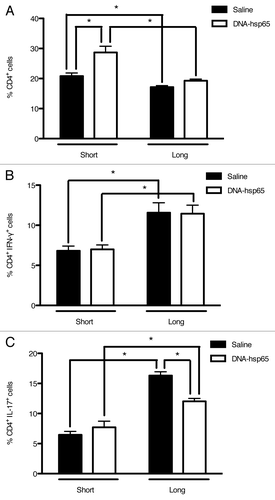Figures & data
Figure 1. Therapeutic efficacy of DNA-hsp65 immunization against tuberculosis. M. tuberculosis challenge was performed on day 0. The immunotherapy was initiated 30 d later. The mice received four doses of 100 μg/dose of DNA-hsp65 (ten days interval). At day 70 and 120 after challenge, corresponding to 10 d (short period) and 60 d (long period) after the end of the therapy, the number of colony forming units were determined in (A) the lungs, (B) spleen and (C) liver. The significant differences are indicated and correspond to p < 0.05 compared with the saline group by Student’s t-test. The data are presented as the means ± SEM of 7 mice per group of a representative experiment.

Figure 2. Reduction of lung inflammation and induction of the Th1-specific response in mice treated with DNA-hsp65. (A) The number of T cell clones secreting IFN-γ after Hsp65 stimulation in cells from the lungs of mice untreated or treated with DNA-hsp65. (B) The measurement of the inflamed area in the lungs from treated and untreated mice. (C) The histological evaluation of lung samples stained with hematoxylin-eosin. The photographs obtained at 50x and 100x magnifications demonstrate the differences in lung inflammation (arrows) observed among the experimental groups. *p < 0.05 by Student’s t-test. The data are presented as the means ± SEM of 7 mice per group of a representative experiment.

Figure 3. Percentage of IFN-γ - and IL-17-producing cells in mice treated with DNA-hsp65. Lung cell suspensions were stained for intracellular detection of (A) IFN-γ or (B) IL-17. *p < 0.05 by two-way ANOVA with Bonferroni post-test. The data are presented as the means ± SEM of 7 mice per group of a representative experiment.

Figure 4. Effects of DNA-hsp65 immunization on γδT cells. Percentages of (A) total γδ+, (B) γδ+IFN-γ+ or (C) γδ+IL-17+ cells from the lungs. *p < 0.05 by two-way ANOVA with Bonferroni post-test. The data are presented as the means ± SEM of 7 mice per group of a representative experiment.


